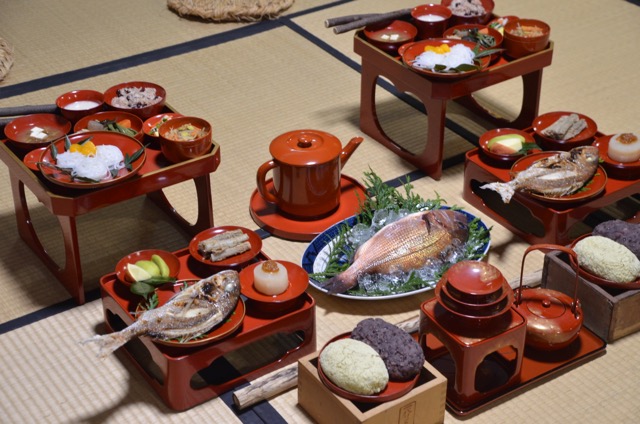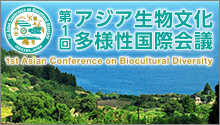In the 8th and final event, students participated in an ancient festival in Okunoto (northern part of Noto Peninsula) called Aenokoto. Every year on December 5, farmers give thanks to the year’s rice harvest by inviting the deities of the rice field into their house, where they draw a bath and offer food to give the deities a break until spring. The same ritual is performed in February 9 of the following year to send the deities out and pray for an abundant harvest. Because they had helped gather ingredients at previous events over the last year, 12 students from 4th, 5th, and 6th grades participated in the ritual of offering food.
When the festival ceremony began, the host drew the deities in from the fields, saying, “The rice field kami has come back! Let’s welcome them!” calling to members of the house and directing the deities to the hearth. After offering some warm amazake (sweet mild sake), they then guided the deities to the bath for some relaxation. The feast followed. At the table, two meals were prepared, one each for the husband and wife deities. Forked daikon, a masu box heaped with red rice, and a stew (nishime) of bracken and osmund fiddleheads, daikon, carrots, konjac, and deep-fried tofu. There was even a side dish called aimaze, with sautéed daikon, carrots and crushed soybeans (uchimame). Many generations ago when there were no refrigerators and meat and fish were harder to come by, uchimame were a valuable protein source. And a majestic sea bream—complete from head to tail—and large balls of ohagi mochi. Soup and pickles. Such an elaborate meal signifies that “rice farming is laborious and tiresome, so please eat your fill!”
Five 6th graders spoke on behalf of the group. “Kami of the rice fields, these are the salted fiddleheads we foraged in May in Maruyama. This is the agodashi we made in July in Suzu. These are the chestnuts we gathered and then dried and pounded in October in Maruyama.” After a hearty “Thank you!” from everyone, the event closed with a taiko performance. The deities of the rice field must certainly have enjoyed this year’s feast prepared by Mii Elementary School students.
Satoyama in places like Mii offers a buffet of choices for delighting in nature’s gifts and making things by hand. It’s important that adults create an environment for elementary school students and other children in the height of their receptivity to come in full-sensory contact with local nature and wisdom derived from the land.





